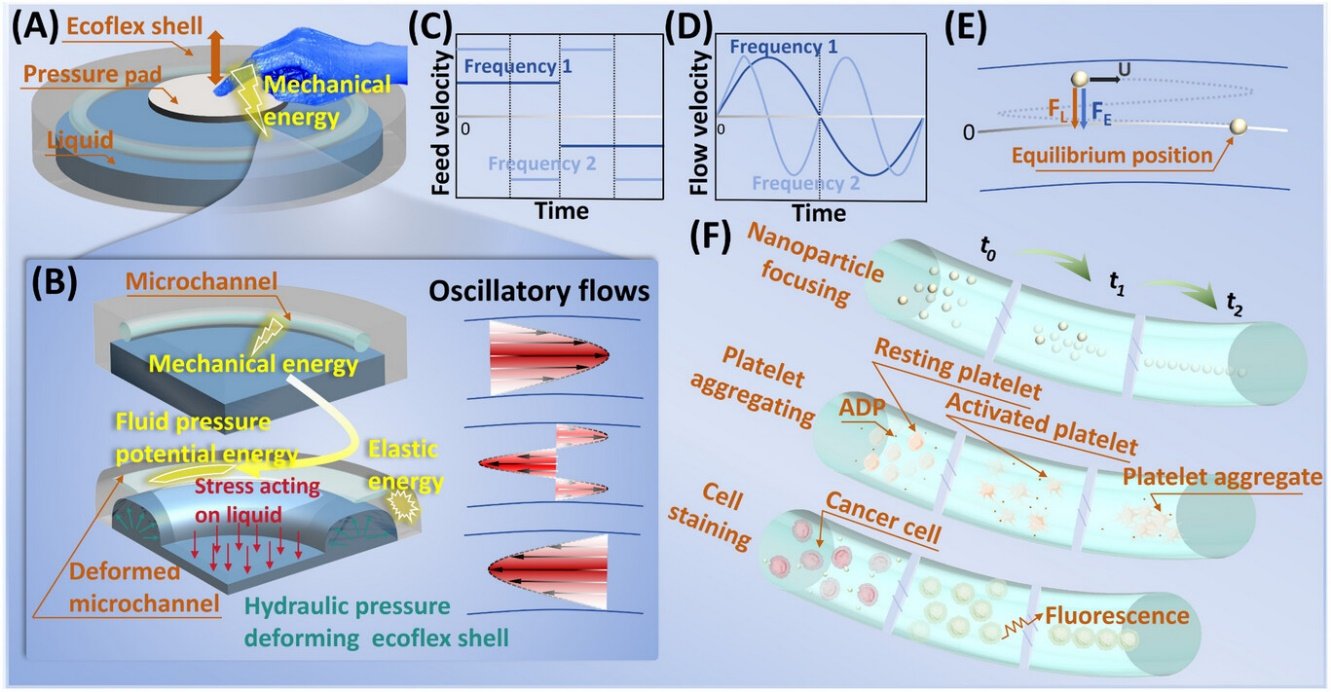On May 23, 2025, the research team led by Dr. Sheng Yan from the Advanced Institute of Shenzhen University published a paper titled " A Pump-Free, Hydraulic-Amplification Oscillatory Microfluidic Device for Continuous Particle and Cell Manipulation " in Advanced Science. The master's student Liu Yong, jointly trained by the Advanced Institute of Shenzhen University and the College of Mechatronics and Control Engineering of Shenzhen University and the master's student Liang Mingyi from the Advanced Institute of Shenzhen University are the first author of the paper. Dr. Sheng Yan from the Advanced Institute of Shenzhen University is the corresponding authors. This work also received support from Dr. Shanshan Xu from the Advanced Institute of Shenzhen University.
Microfluidics can achieve the spatiotemporal manipulation of particles and cells in the microscale fluids, but highly relies on the accuracy of the pumping systems. To overcome this issue, a pump-free, hydraulic-amplification oscillatory microfluidic (PHOMF) device is presented, which can be actuated by fingers to handle particles and cells within the microchannel. The PHOMF device has a hydraulic-amplification module for pressure transfer and a soft microchannel module for the generation of oscillatory flows. This is made possible by the periodic transfer of finger-driven liquid pressure to the soft microchannel. This pressure causes the soft microchannel to deform and then drives the reciprocating flow of fluid volumes within the microchannel. In the oscillatory flow, particles and cells achieve single-line focusing driven by the spatially accumulated inertial and elastic lift forces. After demonstrating the working principle of the PHOMF device, our experiments on particle elasto-inertial self-focusing and theoretical analyses show that under extremely low particle Reynolds numberRep~O(10−4), within 1 min, small particles with a blockage ratio β = 0.033 can achieve single-line focusing. However, for an even lower particle Reynolds numberRep<O(10−6), the diffusion effect of particles is significantly increasedPe~O(10−3), meaning that nanoparticles require a longer time to achieve focusing.To demonstrate the system's practicality, the PHOMF device is utilized to achieve the early observation of platelet clots (3 min) and the rapid staining of cancer cells (8 min). The PHOMF device provides a miniaturized, inexpensive, and efficient detection tool for lab-on-a-chip, and has the potential to become a mass-produced, widely available, and convenient disease detection product.

Figure 1.The working principle and applications of the PHOMF device.
The link to the original paper:
https://advanced.onlinelibrary.wiley.com/doi/10.1002/advs.202507041


